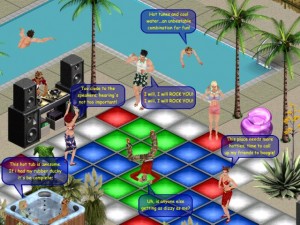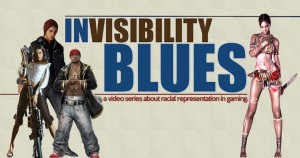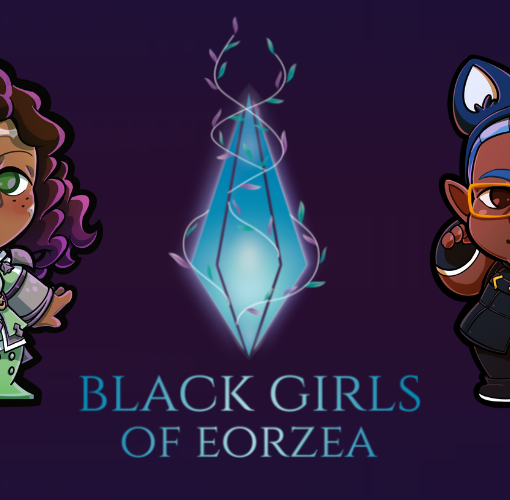I spent most of last week at an annual academic games conference and have spent a lot of time processing and digesting what went on there. The thing that I love about these conferences is that I get to sit and talk (and drink beer) with other academics who often find themselves in the same disciplinary grey area that I do. These are folks who do games in rhetoric, criminal justice, math, sociology, anthropology, you name it. Two of the questions that came up several times over the course of the week (and numerous times before) was how and why did I get into games research and how did Not Your Mama’s Gamer come into being? I gave folks the party line about the realization that there needed to be a change in the ways that we approached teaching and that we needed to be paying closer attention to games and the games community if games were going to be used pedagogically (which they were even before I began teaching).
For the folks at the conference the questions seemed to come from different places, and different people desired different kinds of answers. After some careful thought it seems that most at the folks at the conference feel within one of three categories (not always neatly or completely) which were developers, practitioners, and scholar activists. You can ruminate for a minute on which category I feel most neatly in, but what I find most interesting is that while I have been doing games research for more than a decade at this point that my focus has changed a bit.
 When I started researching games disciplinarily I was coming at it from the angle of a classroom teacher who had been using games in the classroom sporadically for almost 10 years, but my experience as what some would call a core gamer had me questioning what games taught students outside of what teachers wanted them to learn. I was all about learning outcomes and lesson plans (and while those things still interest me, they are no longer my focus). And then something interesting happened. I started playing more avatar based online games like Ultima Online, EVE Online, The Sims Online (which I’ve talked about before), word and card games on Yahoo! and MSN…you get the picture. And that’s when it hit me that while most of the text based online games that I played included a description of my character that built into the narrative I was mostly playing with folks who were more interested in how the narrative evolved (and less interested in what my character’s race or sex was). Don’t get me wrong, it wasn’t like heinous racist or sexist shit didn’t happen in those days, it did, but it seems that it didn’t happen with the frequency or ferocity that it does today.
When I started researching games disciplinarily I was coming at it from the angle of a classroom teacher who had been using games in the classroom sporadically for almost 10 years, but my experience as what some would call a core gamer had me questioning what games taught students outside of what teachers wanted them to learn. I was all about learning outcomes and lesson plans (and while those things still interest me, they are no longer my focus). And then something interesting happened. I started playing more avatar based online games like Ultima Online, EVE Online, The Sims Online (which I’ve talked about before), word and card games on Yahoo! and MSN…you get the picture. And that’s when it hit me that while most of the text based online games that I played included a description of my character that built into the narrative I was mostly playing with folks who were more interested in how the narrative evolved (and less interested in what my character’s race or sex was). Don’t get me wrong, it wasn’t like heinous racist or sexist shit didn’t happen in those days, it did, but it seems that it didn’t happen with the frequency or ferocity that it does today.
 I can remember clearly the episode that seemed to trigger the onslaught of racism and sexism that I have encountered when using avatars who are visually or linguistically raced online. I was playing cards online with a partner who I played with many times and we had beaten several other teams pretty soundly when a player with a white, male avatar wearing a ball cap let out a string of racist epithets toward me because he had lost to what he assumed was a young Hispanic woman (my avatar was light brown in complexion because that was the darkest color offered and my partner had addressed me as chica at some point during the round). I remember being stunned by the onslaught. Was this all because he had lost a card game to two women on the internet? Was it because he had to prove to himself that he was somehow better than the people that he had just lost to? And most interestingly, was it because he was in a space where he was anonymous and could say whatever vile things that he wanted without real repercussions?
I can remember clearly the episode that seemed to trigger the onslaught of racism and sexism that I have encountered when using avatars who are visually or linguistically raced online. I was playing cards online with a partner who I played with many times and we had beaten several other teams pretty soundly when a player with a white, male avatar wearing a ball cap let out a string of racist epithets toward me because he had lost to what he assumed was a young Hispanic woman (my avatar was light brown in complexion because that was the darkest color offered and my partner had addressed me as chica at some point during the round). I remember being stunned by the onslaught. Was this all because he had lost a card game to two women on the internet? Was it because he had to prove to himself that he was somehow better than the people that he had just lost to? And most interestingly, was it because he was in a space where he was anonymous and could say whatever vile things that he wanted without real repercussions?
I would love to say that that was the moment that shifted my research arc, but to be honest I’m not sure that it was but it sure as hell was a moment that gave me pause when I started considering what my students would have to go through in these spaces. Most of the online games that my students had played (for class) up until this point were either LAN based or MOOs and MUDs so while there was some risk of running into random xenophobes it wasn’t as large as in large online COTS (commercial off-the-shelf) games. So what was it that was going on in these spaces (and games in general) and how were these experiences affecting the way that students thought about race, sex, sexual orientation, etc for themselves or for those who differed from them?
Since then my research has focused predominantly on the representation of Otherness in games and how it gets read rhetorically as well as how these readings affect the larger community in and around games (including gamers and game developers). And that was how NYMG came about four and a half years ago. Back then I was listening to the conversations going on around games and among gamers and I found that there were an absence of female voices that talked about things like feminism, race, and sexual orientation. So I finally decided to do what every scholar-activist does, I made my own space for these conversations. A concentrated place to write about games (outside of my regular academic blog) and to have conversations with other scholars, gamers, and developers about the kinds of things that we saw as being important.
And that is something that I think that it’s important that academics across disciplines continue to do. Carve out our own spaces for these conversations and join in the conversations that are already ongoing within the games and development communities. These collaborative spaces are the ones that are going to prove to be most fruitful. At this point we all understand that these conversations will often be difficult, but that they are also ultimately necessary. I’ve met some of the most wonderful folks who are working hard to bring their activism and scholarship together under one roof, who are disappointed when folks least affected by the kinds of behavior that we see and write about tell us to just keep our heads down and power through (though it’s easy to understand where this notion comes from, we realize that it’s not for us because that’s not the work that we do), and who will continue to try to make games and the games community the best that we can.
 And for these reasons and many more NYMG will continue to produce the critical content covering the medium that we love and continue to work to create resources like Invisibility Blues, #YesIPlay, and our Critical Let’s Play series so that we can not only have conversations within the larger games community, but also to help others have conversations with their friends, children, and students. We are working to make our research as far reaching as we possibly can and we are doing this with the help and support of other gamers, scholars, developers, and people like you. We’re not putting our heads down and powering through because our work is engagement and that can only be done by standing tall and having conversations of all kinds. It may not be easy work, but it damn sure is important.
And for these reasons and many more NYMG will continue to produce the critical content covering the medium that we love and continue to work to create resources like Invisibility Blues, #YesIPlay, and our Critical Let’s Play series so that we can not only have conversations within the larger games community, but also to help others have conversations with their friends, children, and students. We are working to make our research as far reaching as we possibly can and we are doing this with the help and support of other gamers, scholars, developers, and people like you. We’re not putting our heads down and powering through because our work is engagement and that can only be done by standing tall and having conversations of all kinds. It may not be easy work, but it damn sure is important.




